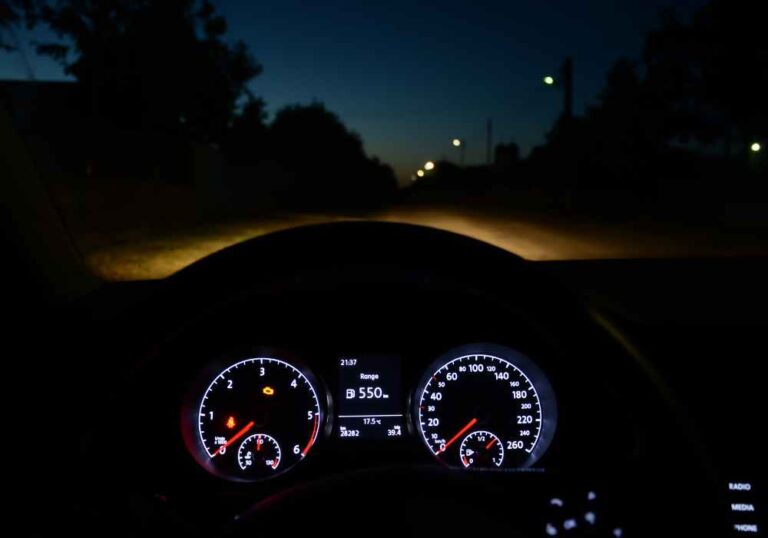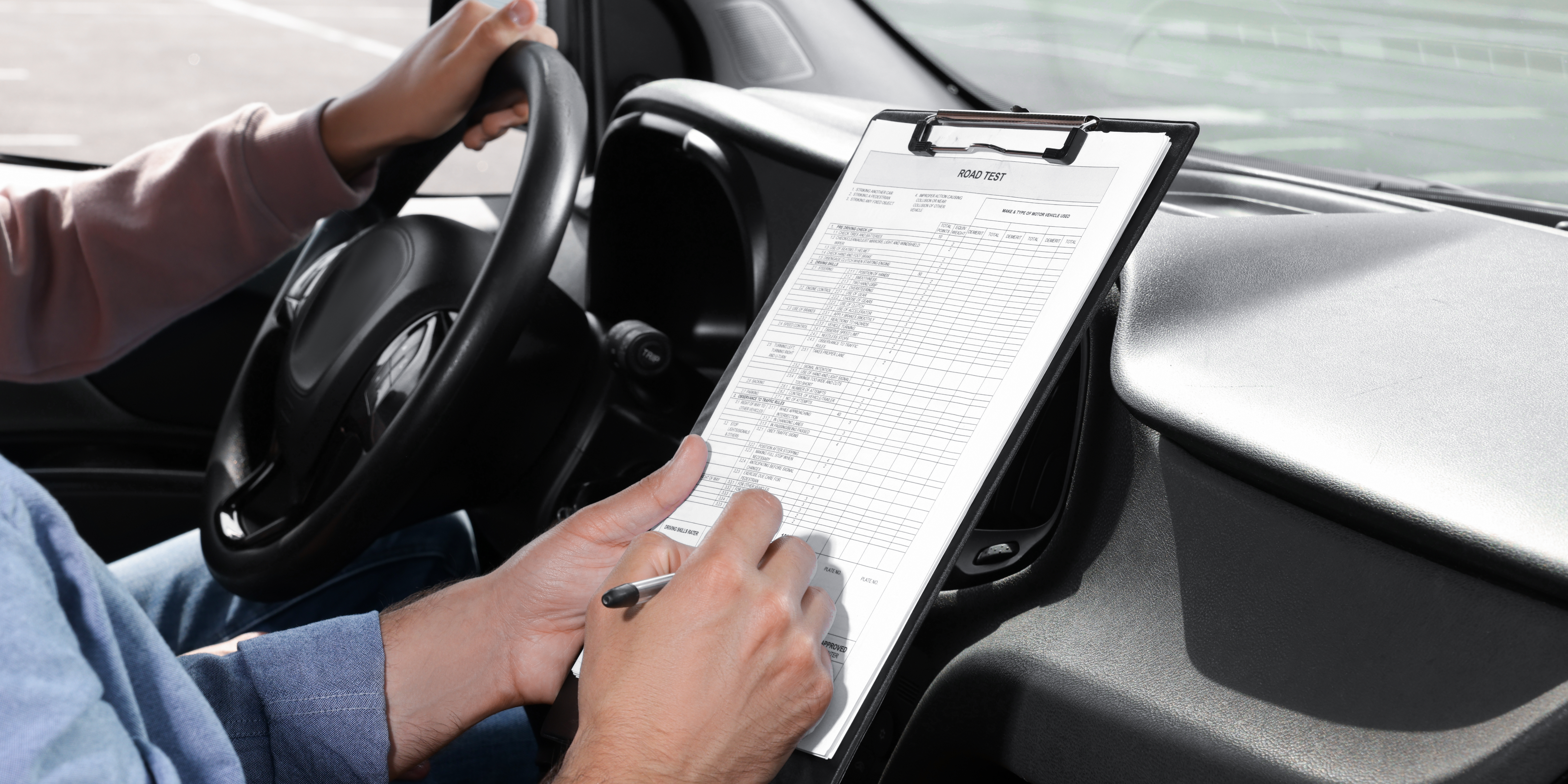Night driving can be intimidating, especially when you’re preparing for a driving test under the cover of darkness. With reduced visibility and different driving conditions, it’s essential to feel confident and well-prepared. In this blog post, we’ll cover everything you need to know to ace your night driving test, from essential skills to practical tips for success.
Understanding Night Driving Challenges
Before diving into preparation strategies, it’s crucial to understand the unique challenges associated with night driving:
- Reduced Visibility: The primary challenge is decreased visibility. Streetlights, headlights, and the absence of natural light can create blind spots and shadows.
- Glare: Oncoming headlights can create glare, making it difficult to see the road and judge distances.
- Fatigue: Nighttime can induce fatigue, impacting your reaction times and decision-making.
- Wildlife and Pedestrians: Animals are more active at night, and pedestrians may not be as visible, increasing the risk of accidents.
Recognizing these challenges will help you stay alert and prepared during your test.
Preparing Your Vehicle
A well-maintained vehicle is crucial for safe night driving. Here are some pre-test vehicle checks to consider:
- Headlights and Taillights: Ensure that your headlights, taillights, and turn signals are functioning correctly. Dim or burnt-out lights can hinder your visibility and lead to failure.
- Windshield Wipers and Fluid: Ensure your wipers are in good condition and that your windshield washer fluid is full, especially if the weather is rainy.
- Tires: Check tire pressure and tread depth. Properly inflated tires with adequate tread improve traction, especially on wet or slippery roads.
- Brakes: Make sure your brakes are responsive. A thorough inspection can prevent potential issues during the test.
- Interior Lighting: Familiarize yourself with your vehicle’s controls and interior lights, which can help you adjust settings without losing focus.
Practice Night Driving
Nothing beats hands-on experience. Here’s how to effectively practice night driving:
- Choose Safe Locations: Start in areas with good lighting and minimal traffic. As you gain confidence, gradually introduce more complex driving environments.
- Practice Different Scenarios: Drive in various conditions—through neighborhoods, on highways, and in rural areas. Each scenario will present unique challenges and help build your adaptability.
- Focus on Speed Control: Night driving often requires adjusting your speed. Practice maintaining a safe speed that allows for quick reactions to unexpected situations.
- Use Your Mirrors: Regularly check your mirrors for vehicles approaching from behind, especially since they can appear closer at night.
- Adjust to Glare: Practice techniques to manage glare from oncoming headlights. This might involve adjusting your seat position or focusing your gaze on the right side of the road.
Key Skills to Master
As you prepare, focus on mastering specific skills essential for night driving:
- Using Headlights Wisely: Know when to switch between high beams and low beams. High beams are ideal for open roads without oncoming traffic, while low beams should be used in urban areas and when other vehicles are present.
- Judging Distance: Night driving can make it challenging to judge distances accurately. Practice using landmarks and visual cues to estimate distances from other vehicles.
- Maintaining Lane Position: It can be harder to see lane markings at night. Use the headlights of vehicles ahead as a guide for your lane position.
- Navigating Intersections: Pay extra attention to traffic signals and signs. Slow down and prepare to stop as you approach intersections, as visibility can be compromised.
Mental Preparation
In addition to practical skills, mental preparation is crucial:
- Stay Calm: Anxiety can affect your performance. Practice relaxation techniques, such as deep breathing, to help calm your nerves.
- Visualize Success: Take a few moments to visualize yourself successfully completing the test. Positive visualization can boost your confidence.
- Get Enough Rest: Ensure you are well-rested before the test. Fatigue can impair your focus and reaction times, so prioritize a good night’s sleep.
- Know the Test Route: If possible, familiarize yourself with the test route during the day. Understanding the roads you’ll be driving can help reduce anxiety.
Day Before the Test
As the day approaches, focus on last-minute preparations:
- Check Weather Conditions: Be aware of the weather forecast. If rain or fog is expected, adjust your driving strategy accordingly.
- Practice Relaxation Techniques: Use the day before the test to practice mindfulness or relaxation techniques to keep anxiety at bay.
- Prepare Your Documents: Ensure you have all necessary documents, such as your learner’s permit and any identification required for the test.
- Limit Distractions: Avoid distractions before your test, whether that means turning off your phone or staying away from social media. Focus on your goal.
During the Test
When the day of the test arrives, keep these tips in mind:
- Stay Focused: Concentrate on the road ahead and stay aware of your surroundings. Avoid distractions, even from the examiner.
- Communicate: Use your turn signals and make your intentions clear to other drivers.
- Be Confident: Trust in your preparation. Confidence can help you perform better under pressure.
- Ask Questions: If you’re unsure about any instructions from the examiner, don’t hesitate to ask for clarification.
Conclusion
Preparing for a night driving test requires a combination of practical skills, vehicle readiness, and mental preparation. By understanding the unique challenges of night driving and following these tips, you’ll be well on your way to passing your test with flying colors. Remember, practice makes perfect, and confidence is key. Good luck, and drive safely!
Click here to view our different packages or click here to book your road test.
Lastly, our services are extended to Toronto, North York, Etobicoke, Scarborough, Vaughan and Brampton.



